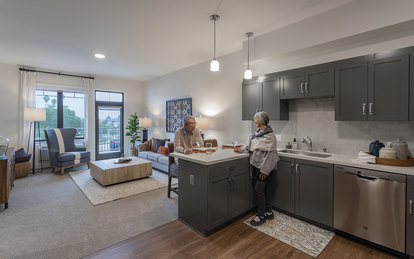Longevity and Ageism: Redefining Senior Living

How can we change the perception that the senior housing and senior living industries are all about decline?
Society often harbors biases and expectations about age, typically stereotyping it as a period of deterioration. Ageism touches every part of society, including education, business, and culture. So, how can we foster a more positive appreciation for aging? How can we shift our mindset to see aging as a time to celebrate our abilities at every phase of life?
While it is essential to focus on healthy longevity through exercise, nutrition, engagement, and avoiding isolation, we also need to reshape deep-seated societal perceptions of aging. Designers and developers should create environments that cater to abilities rather than defaulting to the lowest common denominator, which often results in spaces that are safe but lack excitement.
Chronological age does not determine an individual’s capabilities. There are wonderfully active and productive people in their 70s, 80s, and 90s, just as there are unproductive individuals in their 30s. We should recognize people as individuals, irrespective of age.
The term “senior” often reinforces the stereotype that older adults are frail and in need of care. Instead, Longevity Living focuses on living to one’s abilities.
The population has been aging for quite some time, leading to terms like “silver tsunami” and the “boomers bubble.” That we are living longer is no surprise. We begin to measure aging at 65, but people now live into their late 80s. We have an extra 20-40 years that society has not adequately prepared. Schools are geared towards younger people, institutions and governments expect retirement at 65, and employers often favor a younger workforce. Yet older individuals possess valuable wisdom and experience and can still make significant contributes. Our society and culture needs to engage the aging population and recognize the value of longevity.
As designers, operators, and developers in the senior living industry, we have the power to change perceptions of aging by creating environments that support individuals’ abilities, at all ages, through tasteful accessibility. We can alter longstanding stigmas, much like how curb cuts made life easier for everyone and benefit all ages. We have an opportunity to lead the industry with quality, elegant, and accessible design for Longevity Living. The change begins with us.